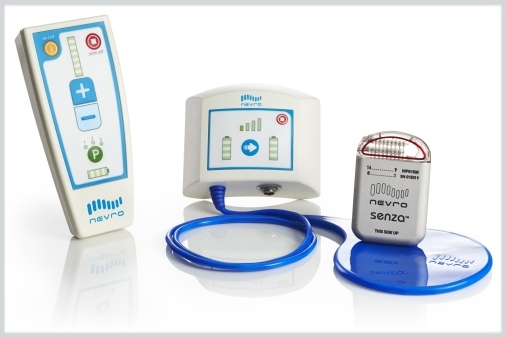Inappropriate prescribing of opioids to manage pain in patients with chronic kidney disease (CKD) continues to be a significant problem.
Studies show that opioid use in this population is associated with increased risks for poor kidney outcomes, hospitalization, and death compared with the use of nonsteroidal anti-inflammatory drugs (NSAIDs).
In a US-based study published in the Clinical Journal of the American Society of Nephrology, investigators calculated the proportion of patients with CKD who received at least 1 prescription for an opioid (eg, tramadol, methadone, and buprenorphine), gabapentinoid (eg, gabapentin and pregabalin), or NSAID (excluding aspirin and topicals). In 2016, there were 181,107 and 109,219 patients in the Geisinger and Johns Hopkins Medicine cohorts, respectively. A total of 29.1% and 19.7% received at least 1 prescription for an opioid in each cohort, respectively, Morgan E. Grams, MD, of Johns Hopkins University in Baltimore, Maryland, and colleagues reported.
Patients with stage 4-5 CKD were 40% and 90% more likely, respectively, than those with stage 1 disease to receive an opioid prescription. Gabapentinoids were prescribed to 9.9% and 6.3% of the cohorts, respectively, and NSAIDs to 27.1% and 19.0%, respectively. NSAIDs are often contraindicated in patients with CKD, the investigators noted.
A recent Canadian study published in Nephrology Dialysis Transplantation confirms inappropriate use of opioids in the CKD population. Among 680,445 patients with nondialysis-dependent CKD, 29.1% were prescribed opioids from 2013 to 2018, most commonly codeine (14.9%) and hydromorphone (7.2%), Amber O. Molnar, MD, of McMaster University, in Hamilton, Ontario, Canada, and colleagues reported. More than half (56.8%) were new opioid users, 24.3% had repeated or long-term use, and 26.6% were prescribed high doses.
Patients prescribed opioids were more likely to be female, have cardiac disease or a mental health diagnosis, and attend more health care visits, according to the investigators. Dr Molnar’s team cited varied examples of inappropriate prescribing. Codeine was prescribed to 50.1% of patients with an estimated glomerular filtration rate (eGFR) less than 30 mL/min/1.73 m2. Opioids were prescribed to 39.1% of patients with a history of alcohol use disorder. Providers concurrently prescribed opioids and benzodiazepines to 20.6% of patients with reduced kidney function. Morphine, which increases the risk of toxicity, was prescribed to 7.2% of patients with an eGFR less than 30 mL/min/1.73 m2. Two or more opioids were prescribed to 7.0% of this CKD population.
“Interventions to improve pain management without the use of opioids and education on safer prescribing practices in patients with CKD are needed,” according to Dr Molnar’s team.
Gabapentinoids are one alternative to opioids, but their elimination by the kidneys is reduced as kidney function declines. A recent study published in the American Journal of Kidney Diseases examined serious adverse events associated with higher vs lower doses of gabapentinoids in a weighted study population of 61,367 Canadian patients older than 65 years with nondialysis-dependent CKD. Of these, 30,660 initiated gabapentin at doses exceeding 300 mg/d or pregabalin at doses exceeding 75 mg/d, whereas 30,707 initiated these pain relievers at lower doses.
The primary composite outcome was the 30-day risk of a hospital visit with encephalopathy, a fall, a fracture, or a hospitalization with respiratory depression. More patients initiating a gabapentinoid at higher vs lower doses experienced the primary outcome: 1.9% vs 1.5%. Higher doses were associated with a significant 27% higher risk of the primary outcome compared with lower doses, Flory T. Muanda, MD, PhD, of Western University in London Ontario, Canada, and colleagues reported.
For every 250 patients who started gabapentin at a dosage higher than 300 mg/d or pregabalin at a dosage higher than 75 mg/d (versus at lower doses), 1 patient experienced the primary composite outcome, the investigators stated.
According to Dr Muanda’s team, “our study provides further evidence that gabapentinoids should be prescribed cautiously and at lower initial doses to older adults with CKD. Patients with CKD starting a gabapentinoid prescription should be monitored carefully for signs of altered mental status and respiratory depression. If verified, these risks should be balanced against the benefits of higher-dose gabapentinoid use.”
In a second study published in the American Journal of Kidney Diseases, the EXTRIP workgroup addressed poisoning from gabapentin or pregabalin. The half-life of gabapentinoids is prolonged in patients with decreased kidney function, especially in those with severe acute kidney injury or CKD stages 3b-5 not already on dialysis, they noted. Based on their systematic review and analysis of 33 studies, the workgroup suggested extracorporeal treatments for gabapentinoid toxicity resulting in coma and mechanical ventilation in patients with decreased kidney function, but recommended against these treatments in patients with normal kidney function.
References
Novick TK, Surapaneni A, Shin JI, et al. Prevalence of opioid, gabapentinoid, and NSAID use in patients with CKD. Clin J Am Soc Nephrol. 2018 Dec 7;13(12):1886-1888. doi:10.2215/CJN.08530718
Molnar AO, Bota SE, Naylor K, et al. Opioid prescribing practices in chronic kidney disease: a population-based cohort study. Nephrol Dial Transplant. Published online December 9, 2021. doi:10.1093/ndt/gfab343
Muanda FT, Weir MA, Ahmadi F, et al. Higher-dose gabapentinoids and the risk of adverse events in older adults with CKD: a population-based cohort study. Am J Kidney Dis. Published online December 31, 2021. doi:10.1053/j.ajkd.2021.11.007
Bouchard J, Yates C, Calello DP, et al. Extracorporeal treatment for gabapentin and pregabalin poisoning: systematic review and recommendations from the EXTRIP workgroup. Am J Kidney Dis. 79(1);January 2022:88-104. doi:10.1053/j.ajkd.2021.06.027






